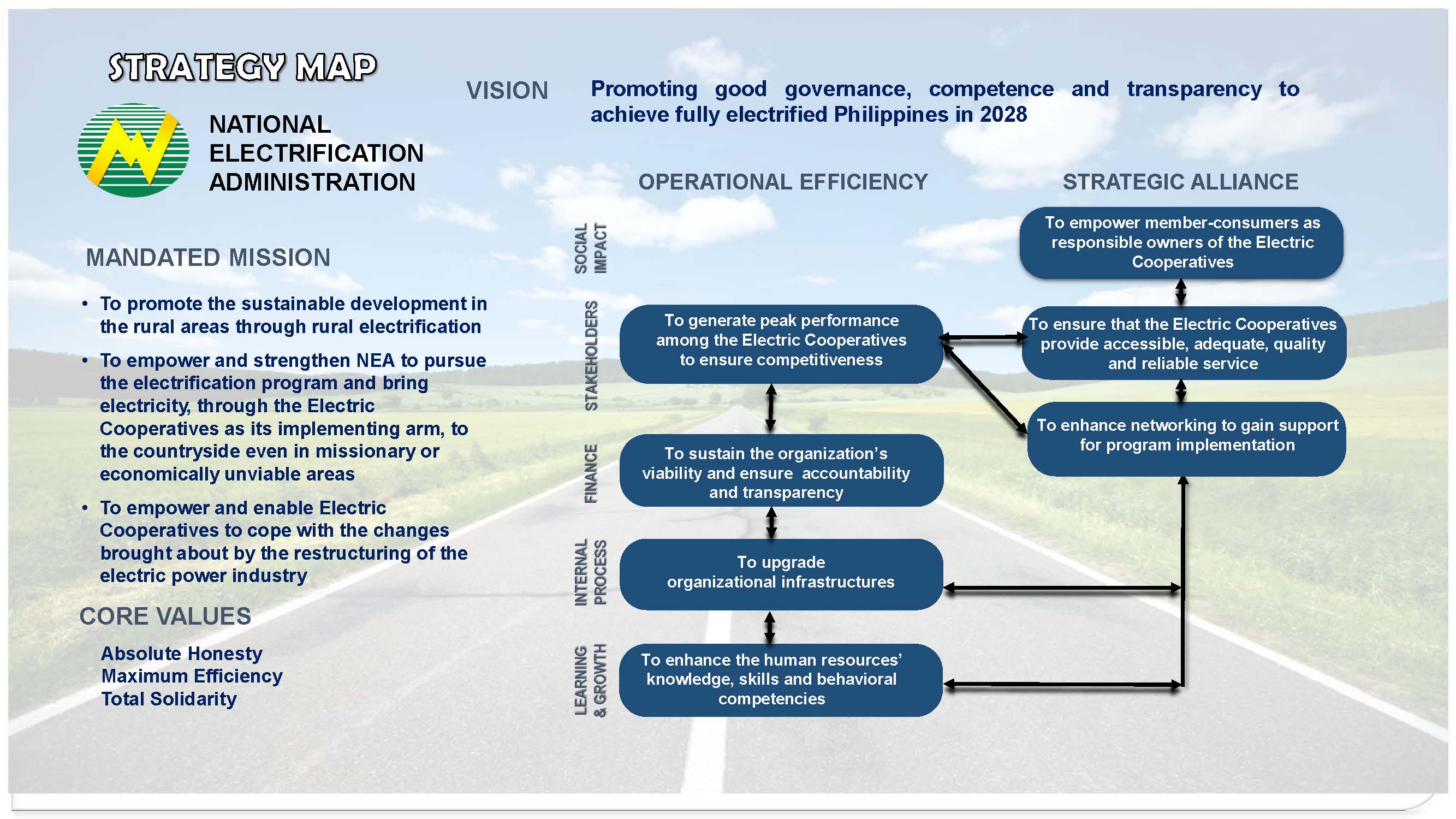BRIEFER ON NEA’S STRATEGY MAP
|
“Promoting good governance, competence and transparency to achieve fully electrified Philippines in 2028” NEA, through its Vision, aspires to fulfill two things: (1) To continuously strengthen its good governance initiatives through further development of its competency and consistently adherence to transparency; and (2) To ensure the realization of the current Administration’s directive to achieve full household electrification by 2028 in partnership with the Department of Energy (DOE) and the Electric Cooperatives (EC). “To promote the sustainable development in the rural areas through rural electrification” “To empower and strengthen the NEA to pursue the electrification program and bring electricity, through the electric cooperatives as its implementing arm, to the countryside even in missionary or economically unviable areas” “To empower and enable Electric Cooperatives to cope with the changes brought about by the restructuring of the electric power industry” NEA’s Mandated Mission is derived from Section 2 of Republic Act No. 10531, or the National Electrification Administration Reform Act of 2013. These marching orders aim for a strengthened NEA and thus, its mission aims for strengthened electric cooperatives, which serve as a dynamic partner in implementing the rural electrification program and a greater goal of countryside development. In NEA’s systematic routine of operation in the pursuit of its goals and objectives, the employees have been guided by the retained Core Values of “Absolute Honesty, Maximum Efficiency, Total Solidarity.” Two themes dictate the strategic priorities of NEA to maximize its potentials in ensuring customer satisfaction: operational efficiency and strategic alliance. Operational efficiency recognizes the value of lifelong learning by enhancing its human resources’ cognitive and behavioral competencies. It also emphasizes organizational infrastructures, encompassing internal systems and procedures, considering that NEA’s compliance to public standards is necessary. On the other hand, strategic alliance, with coalitions and various stakeholders, is geared towards sustaining a symbiotic relationship for peak performance. The strategy map reinforces the importance of NEA to meet the energy consumer demands of the society and to reach the marginalized sectors of the countryside. |










